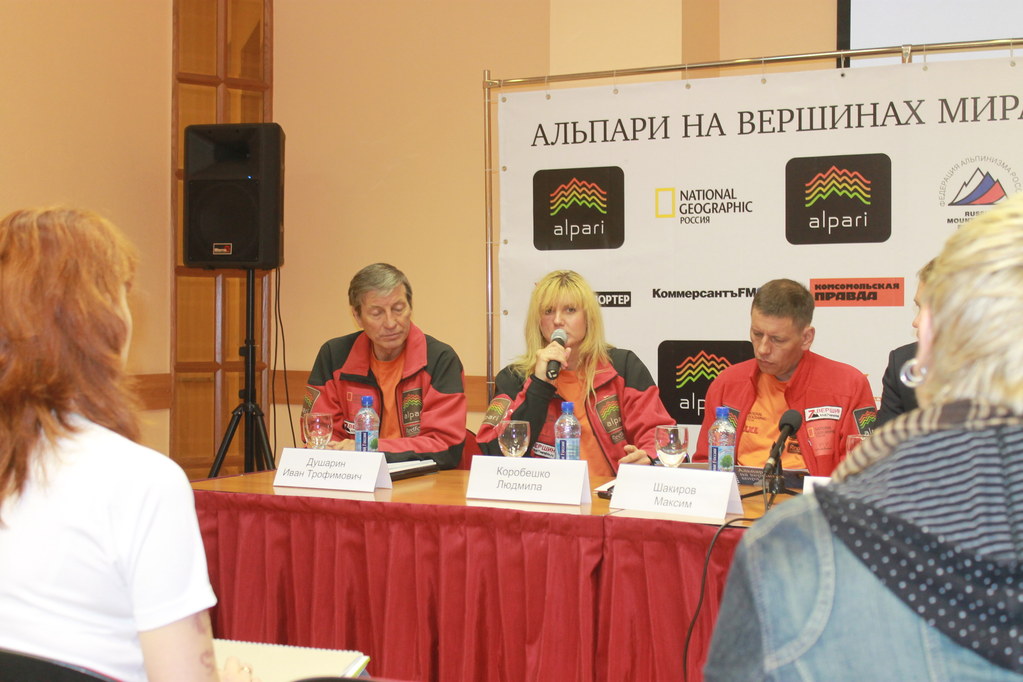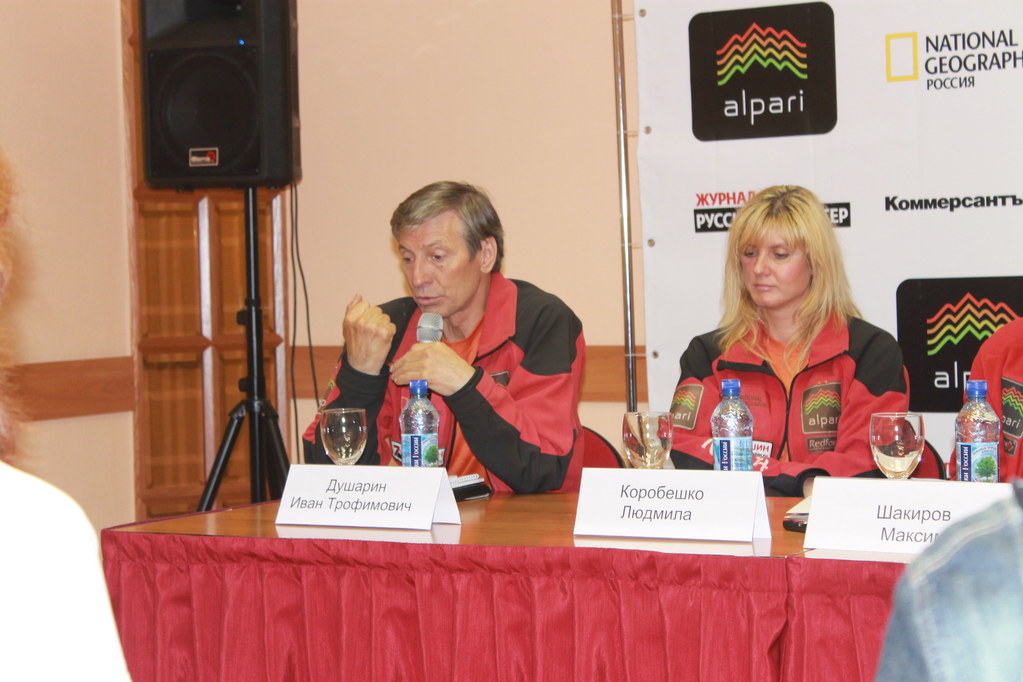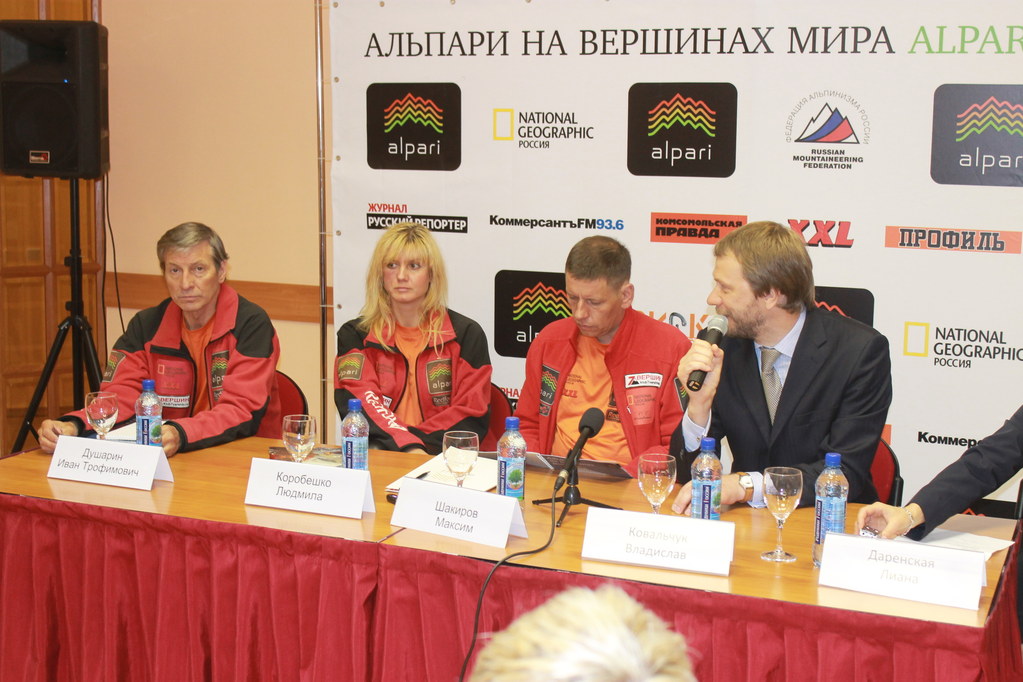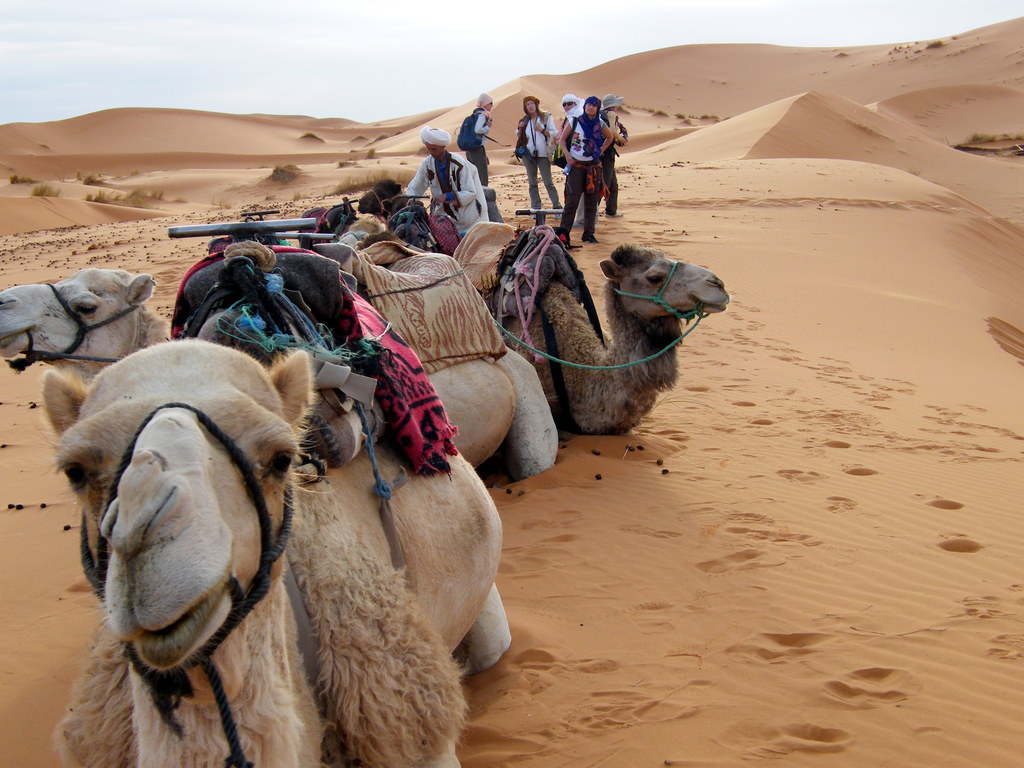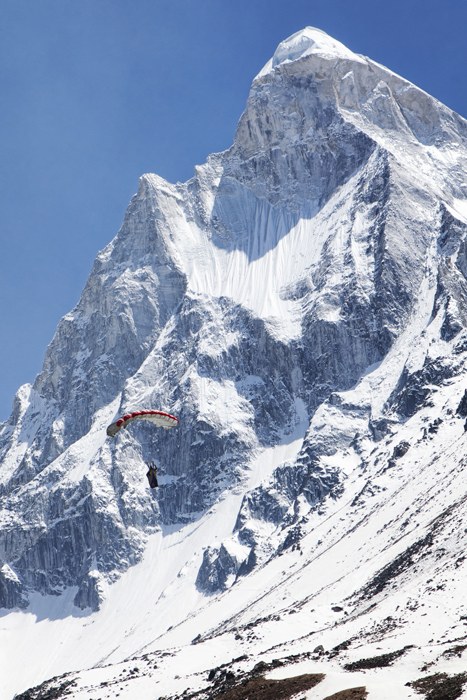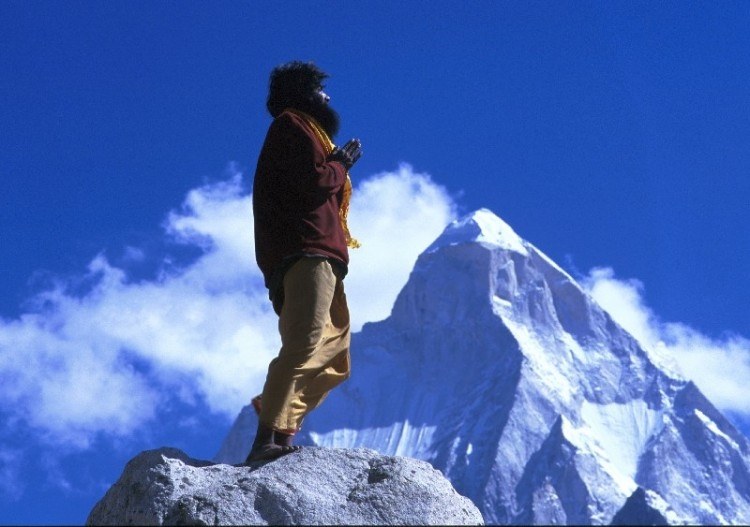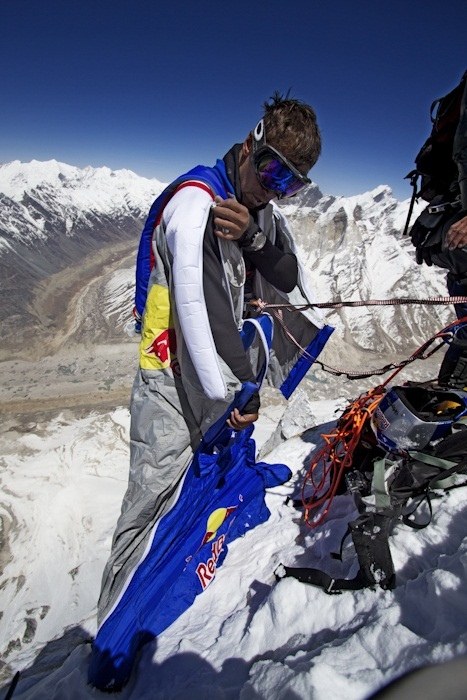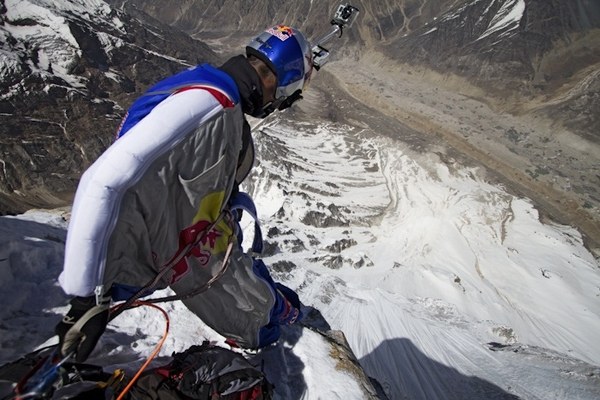All news: 6 June 2012
Team Alpari Holds Its Second Press Conference
Everest.
Alpari-life.ru: After our trio made it through Stage III of “Alpari: On Top of the World” with a successful climb of Mount Everest, we decided it was time to hold another press conference to let them share their stories. The ...
Alpari-life.ru:
After our trio made it through Stage III of “Alpari: On Top of the World” with a successful climb of Mount Everest, we decided it was time to hold another press conference to let them share their stories. The event, which was held June 6, drew in journalists, Team Alpari partners and renowned Russian climbers.
Alpari Head of Marketing Vladislav Kovalchuk was there to speak on the company’s behalf: “Our employees were there with the team as they climbed Kilimanjaro and next they’ll be heading with them to Mount Elbrus. I think this says something about what this company is all about. And that’s the pursuit of achievement and success.” As it just so happened, our team made it to the summit of Everest exactly 30 years after the first Soviet expedition to the Himalayas. The climbers from Team Alpari proved themselves worthy successors, demonstrating the style, tactics and teamwork that have come to characterize Russian mountaineering.
Everest, the longest and most difficult climb our team will face, really took a lot out of the three of them. After two months of toil and overcoming numerous obstacles, the team finally got to share their tales. Their stories were emotional and filled with vivid detail.
Team captain Lyudmila Korobeshko started by explaining the intricacies of acclimatization on Everest, then confessed how worried she was during the final stretch of the climb, when she was running a fever of 38 degrees (having a temperature this high on a mountain this high can be extremely dangerous). She described how difficult it was making the decision to go ahead with the climb, given the enormous responsibility she bore as the leader. “It was really important to make the right decision. I didn’t want to risk having my body fail on me up there, but I didn’t want to let everyone down either.”
This was Ivan Dusharin’s third time on Everest, but as he pointed out, “Mountains always feel a little bit different, even if you take the same route.” Dusharin believes that it was his persistence and his ability to push through discomfort that helped him this time around. He is planning on writing a book where he will reveal a side of mountain climbing that goes unnoticed by the public at large, including the psychological component. Working on a mountain for 22 hours at an altitude more than 8,000 meters above sea level requires a tremendous amount of willpower. “Your body is going to rebel, but you just have to push through it.”
Team cameraman Maxim Shakirov, who dropped the most weight of the three over the two-month expedition (12 kg!), was asked why there was so little footage from the mountain. Maxim was honest. It was too cold and he was too tired. All of his effort went towards self-preservation. Just falling asleep is tough up there. As he explained, it’s really tough to get to sleep in a cold sleeping bag. To warm your sleeping bag up, you have to heat yourself up first – and that’s not always possible. Maxim jokingly noted, “I was very pleased to find out that I do have willpower.”
Seeing as how there have already been more than ten fatalities on Everest this year, a reporter from the Russian site Sport-Express-Extreme asked the team what they thought about the fact that virtually anyone can get a permit to climb Everest. The growing crowds of climbers on Everest have led to dangerous traffic jams along the main climbing routes as well as increasing environmental problems. Ivan Dusharin, with his years of experience climbing and organizing expeditions provided a little bit of insight on the matter. He pointed out that just a couple of decades ago, getting a permit to climb Everest from the Chinese or Nepalese government meant not only filing a formal request to have your expedition approved, but also providing evidence of your climbing ability. These days Nepal is more interested in the income that the recent inflow of climbers and tourists is bringing to the country.
So what do climbers eat on Everest? This was another question that came up. What does Ivan Dusharin carry in his backpack? During the team’s final 22-hour stretch of the climb, in the extreme conditions of Everest, Ivan took only 1.5 liters of tea and a handful of dried fruit (keep in mind that you typically lose around 6 liters of fluids a day when climbing). Is this some sort of special climber’s diet? Nope. As Ivan explained to the reporters, you don’t really think about eating or drinking when you’re up there. As a side note, when the team returned to Base Camp, they were surprised to discover that the Tibetan chefs there had learned to prepare borscht!
A representative from the Russian Mountaineering Federation asked the team what they were planning to do to recover after a hellish stretch of mountain climbing. Maxim answered that he is returning to his village, where he’ll spend his time mowing the lawn and digging up potatoes. Lyudmila is going to spend most of her time before McKinley at the doctor’s office, trying to get better. Ivan Dusharin doesn’t have time to relax either. He has a lot of work to do in Moscow.
Olga Vasilchikova, a representative from the sporting equipment company Red Fox, after congratulating the team on making it through the tough part, asked how their equipment is holding up. This may have been a strange question coming from someone else, but not from Red Fox, the official outfitter of Team Alpari, who has been there for us every step of the way.
At the end of the press conference it was announced that Lyudmila Korobeshko had already made her way into the record books. It turns out that she is the only Russian woman who has climbed Everest twice.
A journalist from Expert magazine wanted to know how many kilometers our team has climbed so far. We did the math, and as it turns out, they have climbed around 15 kilometers vertically and covered around 150-200 kilometers of ground.
And there’s much more ahead…
Video:
A new group of 7 Summits Club in Morocco
Today, the team fromTyumenflew fromMoscowtoCasablanca. Guide of the 7 Summits Club Victor Bobok leads a group of 10 people. The expedition members are planning to climb the highest point of the Atlas Mountains - Toubkal (4167m), after which ...
Today, the team fromTyumenflew fromMoscowtoCasablanca. Guide of the 7 Summits Club Victor Bobok leads a group of 10 people. The expedition members are planning to climb the highest point of the Atlas Mountains - Toubkal (4167m), after which they go on a fascinating journey through theSaharadesert. At the end of the program, the team will rest on the Atlantic coast.
Team: Fedortsov Vladimir, Fedortsova Helena, Fedortsov Ilya, Fedortsov Igor, Tabarintsev Eugene, Krasnov Dmitry , Malkov Leonid, Shulga Roman, Romanov Eugene, Novosadovaya Irina. Guide: Victor Bobok.
Red Bull top altitude: Valery Rozov jumps from Himalaya Peak
Redbull.com. by Jack Frost, Jun 5, 2012 Russian climber and BASE jumper Valery Rozov recently added another highlight to his incredible career in extreme sports by performing a wingsuit jump from the top of Shivling, a 6543m mountain in the ...
Redbull.com. by Jack Frost, Jun 5, 2012
Russian climber and BASE jumper Valery Rozov recently added another highlight to his incredible career in extreme sports by performing a wingsuit jump from the top of Shivling, a 6543m mountain in the Indian part of theHimalayas.
Valery Rozov is a superstar in the world of BASE jumping and wing suit flying, an extreme sport which involves jumping from objects such as bridges, buildings and towers. The 47-year-old Russian’s breathtaking feats, such as flying into an active volcano in Kamtschatka (2009) and jumping fromUlvetannaPeakin the Antarctic (2010), have made him famous the world over.
Thanks to his exceptional climbing skills, Valery recently took things to the next level by completing one of the most challenging BASE jumps ever performed.
After a 30-day expedition, including a six-day ascent, the ‘BASE climber’, as he calls himself, and climbing partners Alexander Ruchkin and Victor Volodin stood on the summit of Shivling in the Indian part of the Himalayas at precisely 13:30 on 25 May. After stopping to catch his breath, Valery found a perfect take-off spot at 6420mt. Just 90 seconds later, having hit speeds of 200km/h as he sped through the air, the Russian landed 2200m further down on the glacier.
The other expedition members took three whole days (!) to complete the descent.
“This was my first project in theHimalayas,” commented the two-time skydiving world champion after his record-breaking flight. “We had a few difficulties along the way, so I am really pleased that we were able to complete the jump successfully.”
By reaching the summit, Rozov, Ruckhin and Volodin also became the first ever Russians to successfully climb Shivling (literally the “phallus of Lord Shiva”, Shiva being the Hindu deity of destruction and transformation), a mountain renowned for its difficult and dangerous passages. Indeed, it was not until 1974 that the peak, which is often referred to as the ‘Matterhorn of the Himalayas’ due to its shape and is looming over the largest source of the Ganges River at Gaumukh, was conquered for the first time.

